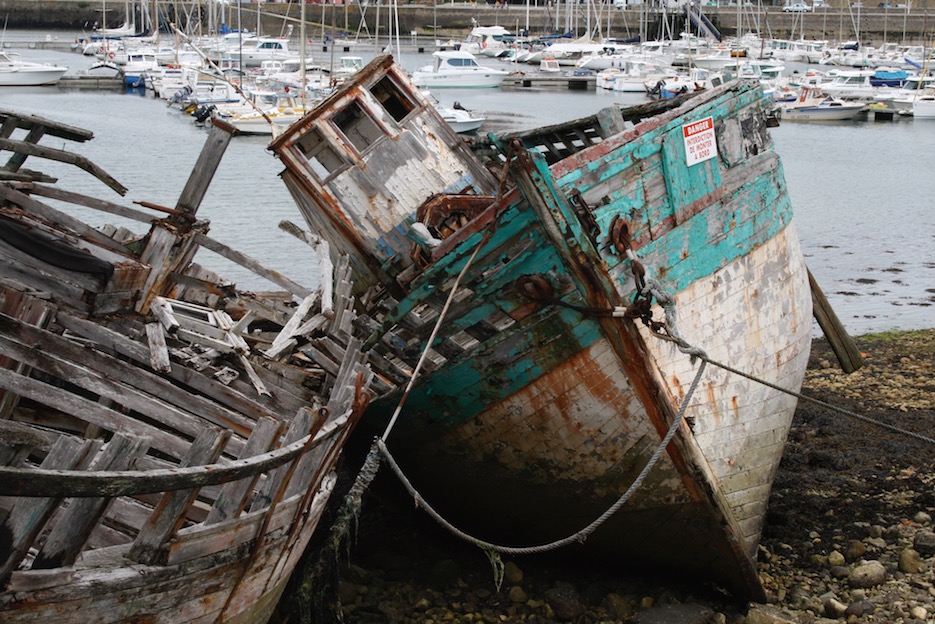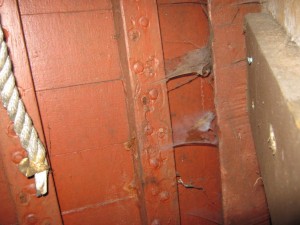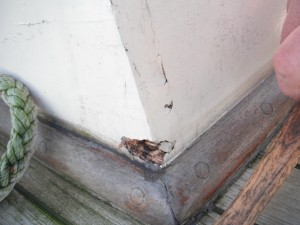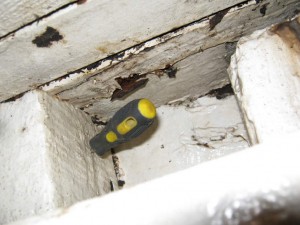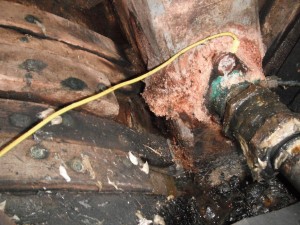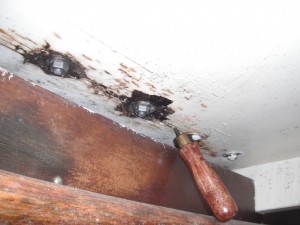When buying a boat you can do a lot of the ground work yourself. In this article Aidan Tuckett of Brighton Marine Surveys explains how to get the most out of it.
In general when you are buying a boat you need to get as much information as you can before committing yourself. The process of making an offer and paying a deposit usually ties you into completing a
sale unless you find issues that show the boat to be significantly different from how she was advertised.
Even if you do find such issues, surveys and haul outs still have to be paid for, so it’s worth making as thorough an initial assessment as possible before you make any commitment. Even where the boat turns out to be in fair condition for its age and type, it’s all too easy to underestimate the amount of work needed to restore and maintain a classic, so the preliminary inspection described here should help you get a feel for what’s really involved.
Starting with the materials, any organic substance will break down over time. For wood this can be caused by rot, marine borers, electric currents caused by dissimilar metals or, for less durable species, simply by prolonged immersion in water.
Metal fittings and fastenings can return to their natural oxides or erode if they are not protected. Oils, paints and resins can, and will, deteriorate from sunlight.
The quality of the original design and construction determines how these factors interact in a marine environment to determine the life expectancy of a wooden boat.
With good maintenance an owner can extend this, or with hard use and abuse, cut it short. A full restoration, if it really is one, can turn the clock back to launch day, and as a rough rule of thumb if that hasn’t happened in about forty years, a wooden boat is unlikely to have much material value. Our job is to estimate what stage the boat might be in that process by sampling.
When you first get aboard, look for where water can lodge – cracks in the deck seams or the coachroof joinery or gaps in the covering board. We want to find places where rainwater and the spores it carries might lodge.
Use your fingernails or a coin to lightly drum painted surfaces – you don’t need to dig spikes in at this stage. Keep in mind the ability of past owners to carefully fill and paint over rotten areas and especially look out for the edges of these areas where fillers, putties or poorly fitted graving pieces are parting company from the original wood. Look at paint coatings more generally and take a view on whether they have been maintained since new, or slapped on the week before.
Look particularly closely at any plywood structures – as a material this has no margin for deterioration.
Going below take a sniff to see how musty the boat is. Rot needs spores and damp to get started. Temperature is also a factor but not a useful one in the warm, damp of the British climate. Poorly ventilated spaces are where it thrives, so keep in mind those places where the deck or coach roof looked dodgy and seek out those same places beneath deck. If it’s hard for you to get to them it was also hard for past owners, so the chances of finding problems are higher.
Again you don’t need to spike the timber – eyes, nose and a thumbnail will tell you enough. A digital camera with a flash at arms length into tight corners can tell you more but make sure you keep the wrist strap on.
Look at the deck head, using your fingers to drum the surface. Get hold of the deck beams and see if you can move them at their ends. Use the camera to get a few shots behind the beam shelf – these are all areas where fresh water can find its way below and start rot.
Moving further down, the bilge of any boat has a plenty of information. Dryness is a virtue but rare in old boats so assuming you are afloat, take a look around the pump sump – does it have a float switch and does it look as if it is cycling the local waters on a regular basis? Have the heels of the frames become softened from years of immersion? Has anyone ever been in there with a paintbrush since she was built?
Also take a look at where seacocks and stern tubes are fitted. Damp wood will conduct the tiny currents that can be generated by the electrical potential between one metal and another. Over the years this will cause the wood to lose its strength and become soft. There is of course far more to surveying wood – the state of the fastenings, the caulking, hogging, gribble infestation – all things that would take at least a day to check on a boat up to about 30ft length and a second day beyond that. But with this guidance you can at least make a better-informed decision on whether to take things forward.
You should not look for perfection – there will inevitably be some degree of foregone maintenance, this will be aside from aging. The question is whether the work needed to put things right can be managed within your resources.
Main photo: Boat for sale – NO MATERIAL VALUE


